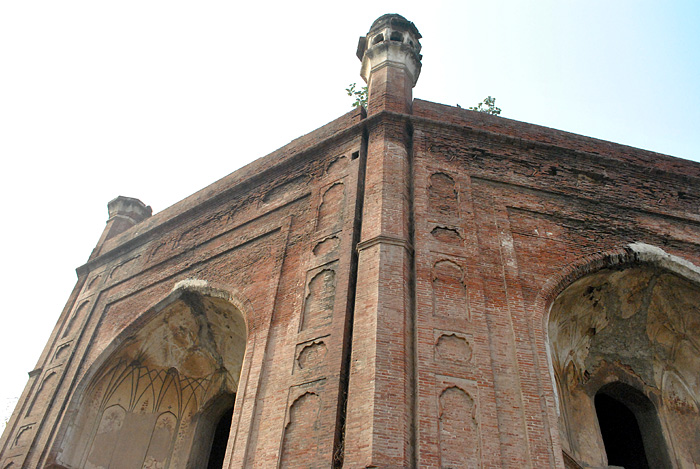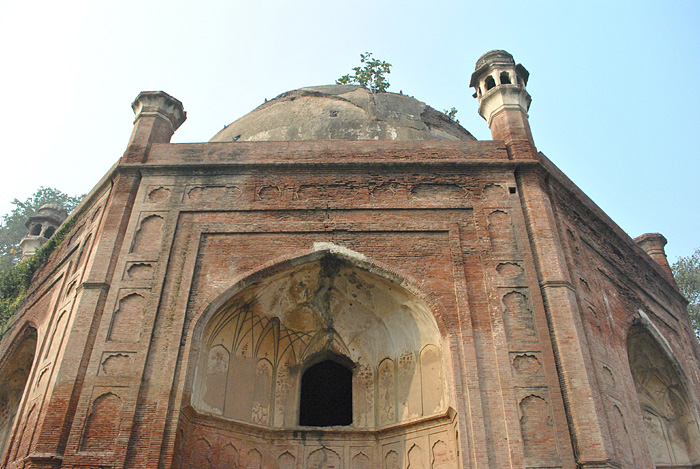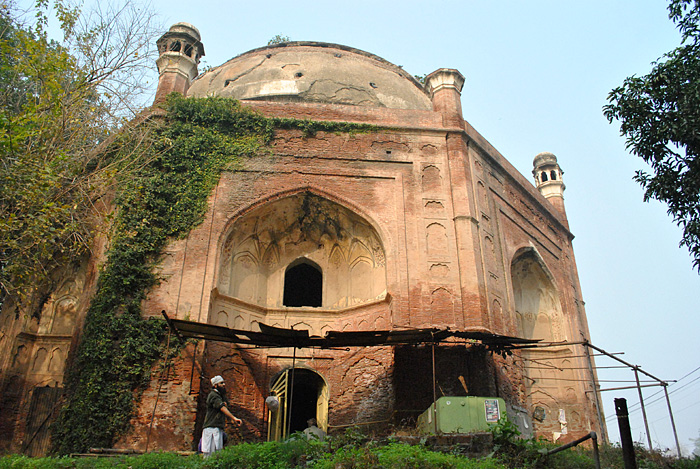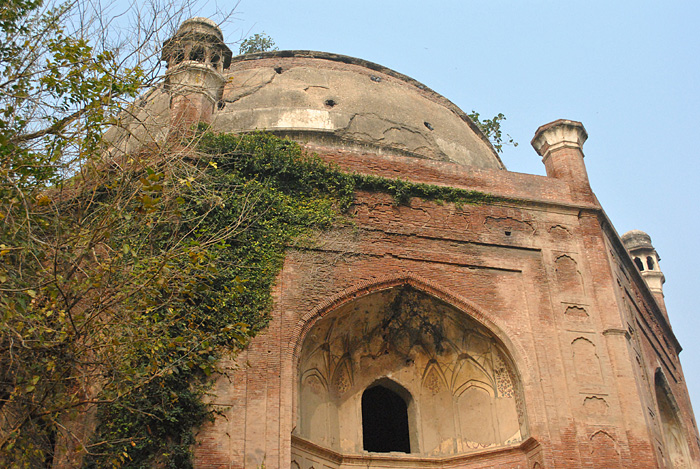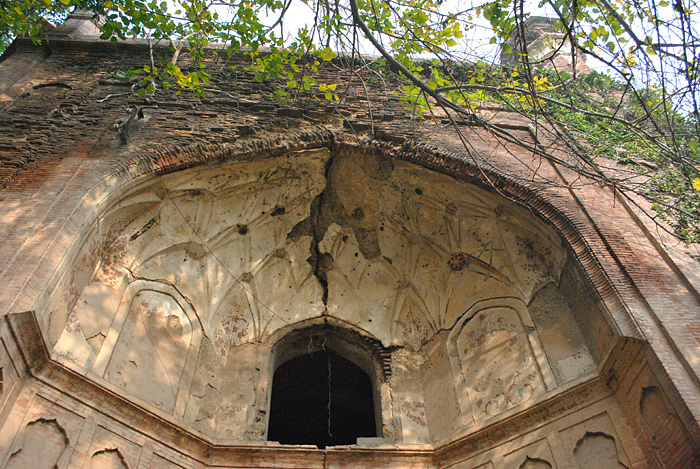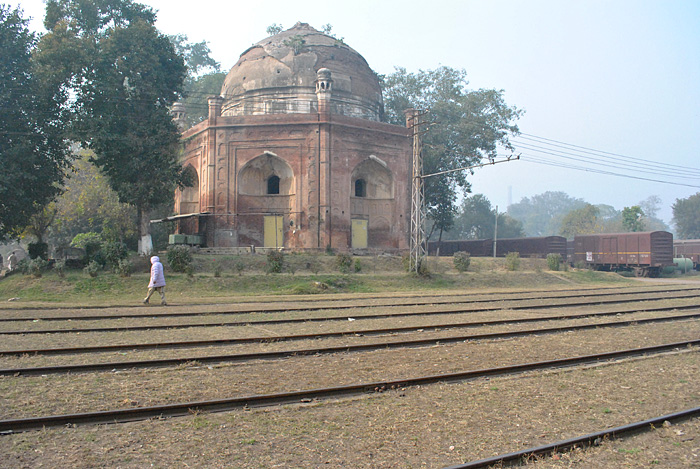Nusrat Khan Tomb
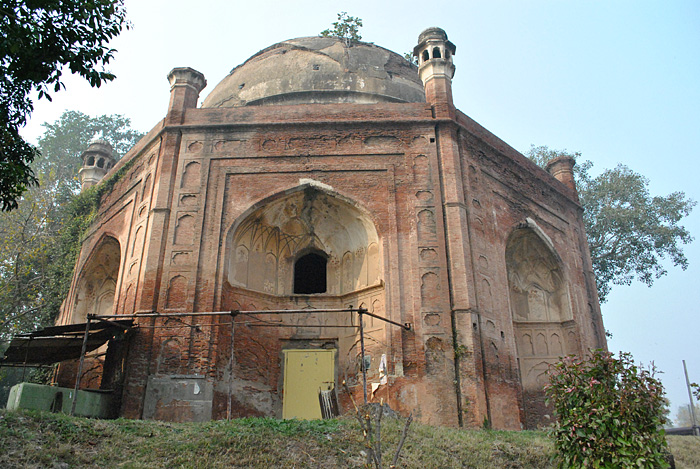
Nusrat Khan fue un cortesano que vivió en la era de Shah Jahan. Su tumba se encuentra cerca del centro de una gran extensión de tierra propiedad de Pakistan Railways y es imposible acceder a ella sin una autorización de seguridad. El diseño general es muy similar al de la tumba de Khan-e-Jahan Bahadur Kokaltash, que se encuentra a menos de un kilómetro al sur.
Entre las primeras referencias a la tumba en la era post-mogol se pueden encontrar en el libro "Tarikh-e-Lahore" (La historia de Lahore) escrito por Rai Bahadur Kanhaiya Lal, un ingeniero que sirvió en Lahore desde 1850-85. En ese trabajo, registra que la tumba había estado rodeada por un vasto jardín con edificios subsidiarios, muchos de los cuales ya estaban abandonados o demolidos por la propia época de Lal. También registra que la tumba fue apropiada durante el reinado de Maharaja Singh por el general Auguste Court, un soldado francés que proporcionó asistencia técnica y entrenamiento al ejército sij. Court ocupó la tumba como su residencia principal y retiró su tumba, pavimentando el piso para crear un espacio habitable. Court continuó ocupando la tumba hasta el asesinato de Maharaja Sher Singh en septiembre de 1843, tras lo cual huyó a Firozpur en territorio británico. En 1844 regresó a Francia con su esposa e hijos punjabíes, y pasó el resto de sus días en París hasta su muerte en 1880.
En la actualidad, la tumba se ha reutilizado como un lugar de veneración para Khwaja Hassan. Aunque la tumba no tiene una conexión histórica con ese individuo (Nusrat Khan también era conocido como Khwaja Sabir, no Khwaja Hassan), la tumba se usa en esa capacidad.
Nusrat Khan was a courtier who lived in the era of Shah Jahan. His tomb stands near the center of a large tract of land owned by Pakistan Railways and is impossible to access without security clearance. The overall design is very similar to the Khan-e-Jahan Bahadur Kokaltash Tomb which stands less than a kilometer to the south.
Among the earliest references to the tomb in the post-Mughal era may be found in the book "Tarikh-e-Lahore" (The History of Lahore) written by Rai Bahadur Kanhaiya Lal, an engineer who served in Lahore from 1850-85. In that work he records that the tomb had been surrounded by a vast garden with subsidiary buildings, much of which was already derelict or demolished by Lal's own era. He also records that the tomb was appropriated during Maharaja Singh's reign by General Auguste Court, a French soldier who provided technical assistance and training to the Sikh army. Court occupied the tomb as his principle residence and removed its grave, paving over the floor to create living space. Court continued to occupy the tomb until the assassination of Maharaja Sher Singh in September 1843, whereupon he fled to Firozpur in British territory. In 1844 he returned to France with his Punjabi wife and children, living out the rest of his days in Paris until his death in 1880.
At present the tomb has been repurposed as a place of veneration for Khwaja Hassan. Although the tomb has no historical connection to that individual (Nusrat Khan was also known as Khwaja Sabir, not Khwaja Hassan), the tomb is used in that capacity.
